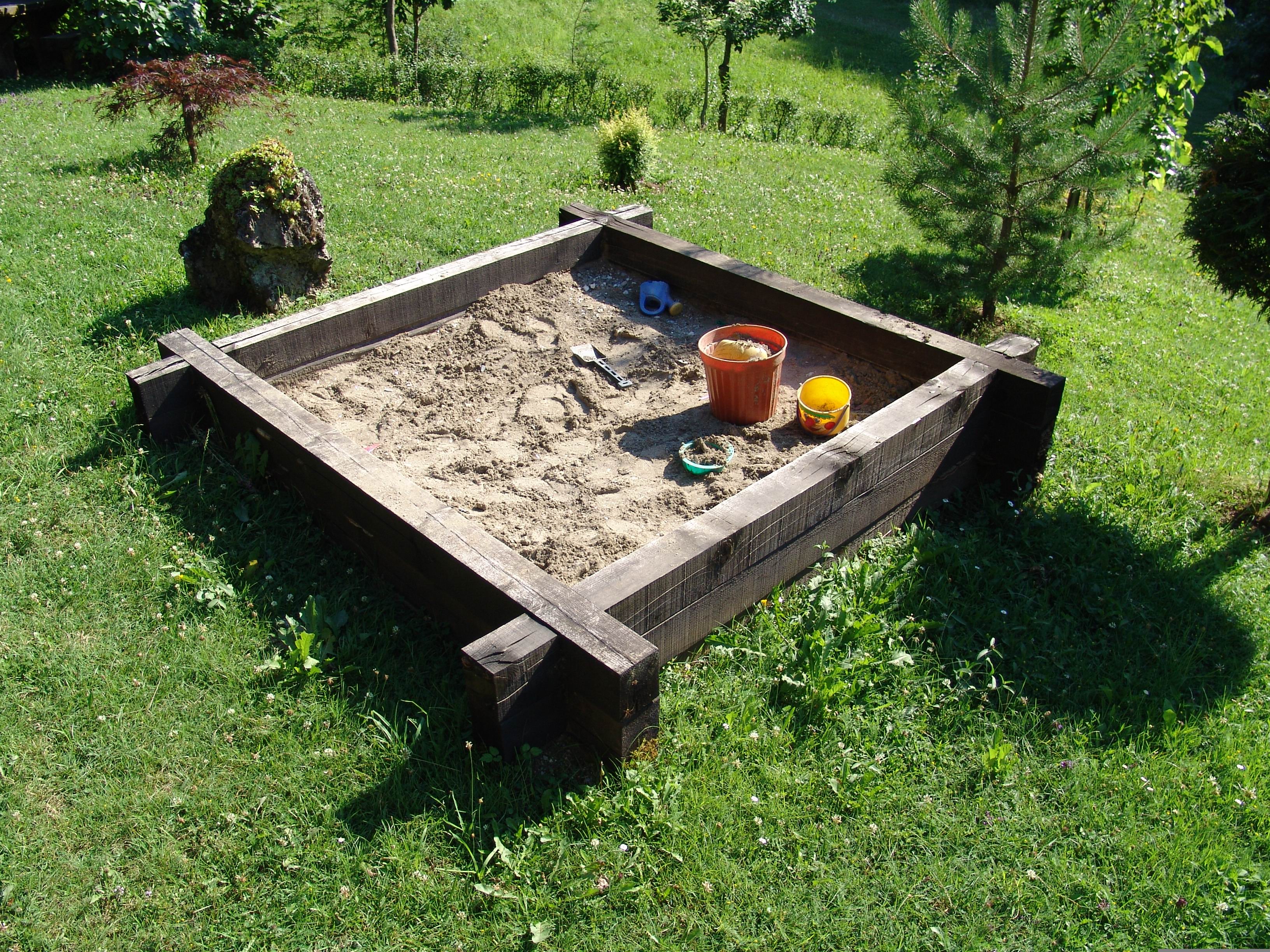"Sandpit". Licensed under Public domain via Wikimedia Commons.
A sandpit (Commonwealth countries) or sandbox (US/Canada) is a low, wide container or shallow depression filled with sand in which children can play. Many homeowners with children build sandpits in their backyards because, unlike much playground equipment, they can be easily and cheaply constructed. A "sandpit" may also denote an open pit sand mine.
Sandpits encourage the imagination and creativity of children by providing materials and space to build several structures such as sandcastles; use toy trucks,shovels, and buckets to move the sand around; dig holes and bury objects, etc. In other words, the sand provides a medium in which children can pretend to explore, construct, and destroy the world in three dimensions. This idea of being creative and experimentation is the source of the metaphorical uses of the word 'sandpit' or 'sandbox'.
The "pit" or "box" itself is simply a container for storing the sand so that it does not spread outward across lawns or other surrounding surfaces. Boxes of various shapes are often constructed from planks, logs, or other large woodenframes that allow children easy access to the sand and also provide a convenient place to sit. Small sandpits are also available commercially. These are usually made from plastic and are often shaped like an animal or other familiar objects.
They sometimes also have lids to cover the sand when not in use, so that passing animals cannot contaminate the sand by urinating or defecating in it. Having lids also prevents the sand in outdoor sandpits from getting wet when it rains, although some dampness is often desirable as it helps the sand hold together. Prefabricated sandpits may also be used indoors, especially in day care facilities. Materials other than sand are also often used, such as oatmeal, which are necessarily non-toxic and light enough to easily vacuum away.
Sandpits can have a solid bottom or they can be built directly onto the soil. The latter allows free drainage (which is useful if the top is open) but can lead to contamination of the sand with soil if the children dig down to the ground.
The sand gets dirty over time and is eventually replaced. The old sand can be discarded or used for other purposes (for example, mixed into concrete).
Some people may use ordinary building sand to fill sandpits, while others use special sandbox sand. Since it is not washed, building sand is far cheaper, but often contains materials such as clay that may stain clothes. It also contains a mixture of grain sizes and colors, and hence has less eye appeal. Ordinary building sand may be strained with a sieve and washed to remove clay and particles to create a cleaner play medium. Many schools and playgrounds in North America have replaced sand around play structures with a wood chip mixture, as it is cheaper and does not stain clothing.
Source


